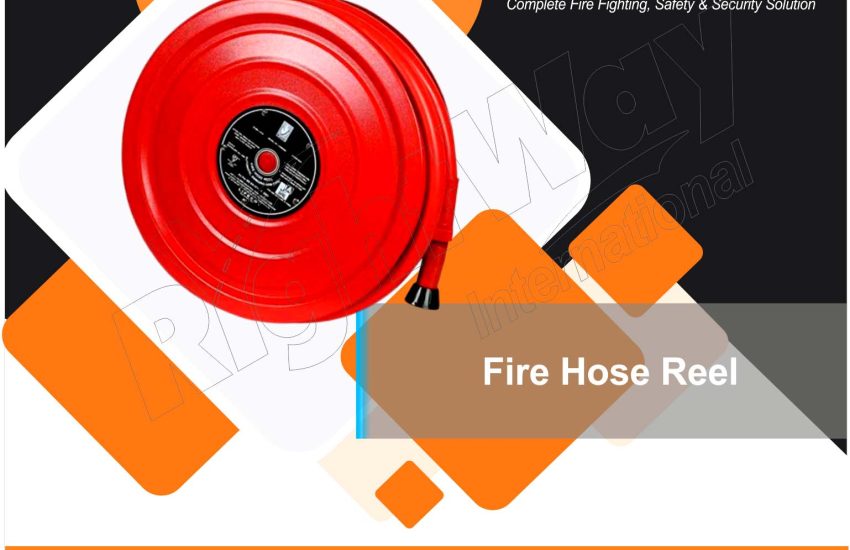Fire Hose Reel are crucial for providing a readily accessible and effective means of combating small to moderate fires before they escalate. They are typically installed in buildings to ensure that occupants can quickly and easily access water in an emergency. Their design and functionality make them a vital part of any fire protection system.
Components of a Fire Hose Reel
- Hose Reel: The reel is a cylindrical drum that holds the hose. It is designed to allow the hose to be easily pulled out and retracted, often with a mechanism to ensure smooth operation.
- Hose: Made of durable materials, the hose is designed to withstand high water pressure. It is usually flexible and reinforced to resist kinking and abrasion.
- Nozzle: Attached to the end of the hose, the nozzle controls the flow and direction of the water stream. Different types of nozzles can adjust the spray pattern, from a fine mist to a solid stream.
- Valve: This controls the water flow from the main supply. It allows users to start and stop the water flow as needed.
- Mounting Frame: The reel and hose are mounted on a sturdy frame, which is securely attached to a wall or other structure.
How Fire Hose Reels Work
Fire hose reels are designed to be user-friendly. In an emergency, users pull the hose from the reel, extend it to the fire, and use the nozzle to direct the water. The reel’s mechanism allows for smooth extension and retraction, making it easier to maneuver the hose during use.
- Deployment: The user unwinds the hose from the reel, typically pulling it off manually or using a winding mechanism.
- Activation: The valve is opened to allow water to flow through the hose and out of the nozzle.
- Application: The user directs the nozzle towards the fire, adjusting the water stream as needed to extinguish the flames.
- Recoil: After use, the hose is cleaned, dried if necessary, and then rewound onto the reel for storage.
Installation and Maintenance
- Installation: Fire hose reels should be installed in accessible locations, typically in hallways or other strategic areas where they can be quickly reached in an emergency. Installation must comply with local building codes and fire safety regulations.
- Maintenance: Regular maintenance is essential to ensure the fire hose reel is in proper working condition. This includes checking for leaks, ensuring the hose is free of kinks or damage, and ensuring the reel operates smoothly. Regular inspections and servicing by a qualified professional are recommended to keep the system in optimal condition.
Advantages of Fire Hose Reels
- Readiness: Fire hose reels are always ready for use, providing immediate access to water in emergencies.
- Ease of Use: They are designed to be straightforward, even for individuals with minimal training.
- Effectiveness: They deliver a high volume of water, which is effective in controlling and extinguishing fires.
- Maintenance: Compared to fire extinguishers, hose reels are easier to maintain and refill.
Conclusion
Fire hose reels are an integral component of fire safety systems, offering a reliable and efficient method for fire suppression. Proper installation, regular maintenance, and user training are key to ensuring their effectiveness in an emergency. By providing quick access to water and a user-friendly design, fire hose reels help protect lives and property from the devastating effects of fire.


